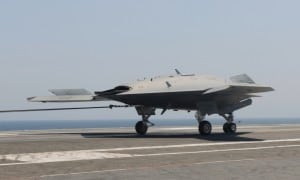
Many of the technologies that will define the U.S. military’s third offset strategy have yet to be invented, so Deputy Defense Secretary Robert Work–the concept’s most vocal champion--often explains his vision in terms of science fiction works in popular culture.The defining concept within the third offset is the development of seamless interaction between humans and machines on the battlefield. It involves elements of artificial intelligence (AI) and robotic warfare that have been the focus of alarmist literature and film, but…

 By
By 








